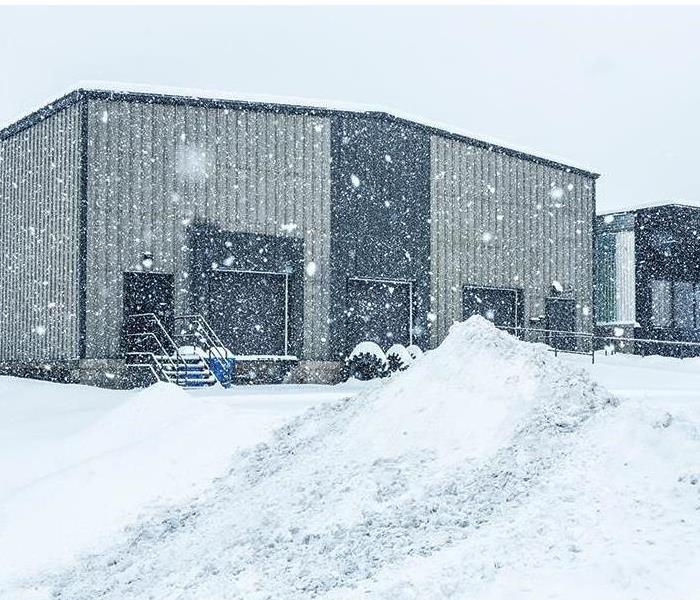Severe storm weather and your business.... 8 Steps to prepare!
1/31/2020 (Permalink)
Here are 8 steps to take BEFORE a winter storm hits!!!!
1. Stay Informed
Monitor for severe winter weather at the NOAA ( National Oceanic and Atmospheric Administration ) National Weather Service.
2. Know Terminology
In order to appropriately prepare for a winter storm, you need to know and understand the major weather terminology.
- Winter Storm Watch: Severe winter conditions, such as ice and/or heavy snow are possible in the next 12-36 hours. – START PREPARING NOW!
- Winter Storm Warning : Severe winter conditions are EXPECTED in the next 12-24 hours; 4-6 inches of snow or sleet, or ¼ inch or more of ice is expected. – SEEK SHELTER
- Blizzard Warning: Snow and strong winds ( gusts up to 35 mph or greater ) can produce a blinding snow ( near zero visibility ), deep drifts, and life threatening wind chill that is EXPECTED to occur for three hours or longer.
3. Emergency Supplies – STOCK UP!
Stocking up on emergency supplies is imperative to your business surviving severe winter weather. Items to consider purchasing are: a stand by electric generator for emergency power, sandbags, shovel, road salts for parking lots or ice melt.
4. Establish shelter location on your property
Employees and customers should always be informed about shelter locations on your property. Wherever you choose to have shelter locations the following are things to think about as you create that space:
- Can this space house your employees and customers comfortably for hours to possibly days?
- Do you have flashlights – enough for one per person?
- Do you have some form of nourishment in the event of a blizzard?
- Do you have enough water for each person?
- First Aide Kit
- Blankets
5. Have a business emergency or continuity plan
You must be prepared for power outages. You need to determine what kind of electric generator will best suit your needs. Maintaining an on going inventory of all equipment and assets for your business in the event of any structural damage. Install surge protectors to protect electronic equipment like desk top computers.
6. Determine a back-up heat source
Heating sources should only be used in a well ventilated room to avoid lethal carbon monoxide gas. Fire extinguishers should always be on hand whenever using electronic or a secondary heating system.
7. Use battery powered smoke and carbon monoxide detectors
When there is a lack of power electronic monitoring equipment can quit working or malfunction. For this reason we always suggest using battery powered detecting equipment.
8. Adjust Employee Hours
Consider whether you will need to reschedule work hours. Possibly encourage employees to work from home if possible. AVOID all strenuous outdoor labor and postpone nonessential meetings or tasks.





 24/7 Emergency Service
24/7 Emergency Service